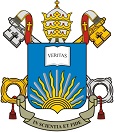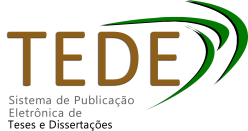| Compartilhamento |


|
Use este identificador para citar ou linkar para este item:
http://tede2.pucgoias.edu.br:8080/handle/tede/5138| Tipo do documento: | Dissertação |
| Título: | Processos históricos da regularização fundiária no setor Pedro Ludovico |
| Título(s) alternativo(s): | Historical processes of land regularization in the Pedro Ludovico sector |
| Autor: | Silva, Thatiane Luiza de Castro e  |
| Primeiro orientador: | Resende, Sandra Catharinne Pantaleão |
| Primeiro membro da banca: | Bazzoli, João Aparecido |
| Segundo membro da banca: | Moraes, Lúcia Maria |
| Resumo: | A pesquisa tem como tema a transformação do setor Pedro Ludovico no Município de Goiânia, capital do estado de Goiás a partir de sua formação. Com isso, observa-se no decorrer deste estudo de caso que o referido setor foi originado de 3 fazendas e foi o último loteamento oficialmente implementado pelo Estado. Na década de 1940, parte dessa área foi ocupada e permaneceu muito tempo de forma irregular, sendo possível identificar remanescentes do processo de ocupação que o origina mesmo que tenham ocorrido ações de regularização fundiária. Ainda que seja um bairro histórico e localizado em área consolidada da cidade, tem-se diversas áreas ainda não regularizadas e outras regularizadas mediante determinados instrumentos de planejamento urbano e ordenamento territorial, como concessão de uso e posse urbana que não garantem a propriedade efetiva das áreas. Por outro lado, tem-se a regularização fundiária urbana cujo objetivo é regularizar imóveis que estavam em desacordo com a legislação ou clandestinos, ou seja, áreas formalmente irregulares. Com a formação da nova capital na década de 1930, as pessoas começaram a ocupar as áreas pertencentes ao Estado, vivendo em loteamentos irregulares e clandestinos, impulsionado por migrações e oportunidades de trabalho. Em consequência, houve uma expansão desordenada e especulativa dessas áreas e aquelas adjacentes, próximas aos fundos de vale, criando desafios urbanísticos persistentes. Com isso, a pesquisa consiste na análise desse processo de ocupação e conflitos fundiários para compreender melhor a dinâmica de regularização fundiária e suas implicações no desenvolvimento urbano de Goiânia, e, principalmente, sobre as áreas que ainda necessitam de regularização. Verifica-se a problemática de loteamentos implantados de forma irregular ou clandestina presente em grande parte da expansão urbana de Goiânia, de forma a afetar consideravelmente o desenvolvimento sustentável, seja pela forma de ocupação do solo, seja pela ineficiência das políticas urbanas. Portanto, para o desenvolvimento da pesquisa, tem-se o levantamento de dados cartográficos da cidade de Goiânia, com foco no Setor Pedro Ludovico. Buscou-se identificar a quantidade de terrenos irregulares no bairro e indicar os instrumentos atuais que permitam a regularização fundiária, conforme a lei n° Lei 13.465/2017. A metodologia aplicada classifica-se como pesquisa exploratória e qualitativa-quantitativa perpassando por revisão bibliográfica, levantamento de campo, revisão de dados históricos cartográficos e sistematização de dados, conforme apresentado nesta pesquisa. Por fim, pode-se observar as dinâmicas de ocupação de determinadas áreas da cidade, os agentes envolvidos e a efetividade das políticas voltadas à habitação e regularização fundiárias em Goiânia |
| Abstract: | The research's theme is the transformation of the Pedro Ludovico sector in the Municipality of Goiânia, capital of the state of Goiás, from its formation. Therefore, it is observed throughout this case study that the aforementioned sector originated from 3 farms and was the last subdivision officially implemented by the State. In the 1940s, part of this area was occupied and remained irregular for a long time, making it possible to identify remnants of the occupation process that gave rise to it even though land regularization actions took place. Even though it is a historic neighborhood and located in a consolidated area of the city, there are several areas that have not yet been regularized and others that have been regularized through certain urban planning and territorial ordering instruments, such as concessions of use and urban possession that do not guarantee effective ownership of the areas. On the other hand, there is urban land regularization whose objective is to regularize properties that were in violation of legislation or illegal, that is, formally irregular areas. With the formation of the new capital in the 1930s, people began to occupy areas belonging to the State, living in irregular and clandestine settlements, driven by migration and job opportunities. As a result, there was a disorderly and speculative expansion of these areas and those adjacent, close to the valley bottoms, creating persistent urban challenges. Therefore, the research consists of analyzing this process of occupation and land conflicts to better understand the dynamics of land regularization and its implications for the urban development of Goiânia, and, mainly, on the areas that still require regularization. There is the problem of irregularly or clandestinely implemented subdivisions present in a large part of the urban expansion of Goiânia, in a way that considerably affects sustainable development, either due to the form of land occupation or due to the inefficiency of urban policies. Therefore, for the development of the research, cartographic data from the city of Goiânia was collected, focusing on the Pedro Ludovico Sector. We sought to identify the amount of irregular land in the neighborhood and indicate the current instruments that allow land regularization, in accordance with law no. Law 13,465/2017. The methodology applied is classified as exploratory and qualitative-quantitative research involving bibliographic review, field survey, review of historical cartographic data and data systematization, as presented in this research. Finally, one can observe the dynamics of occupation of certain areas of the city, the agents involved and the effectiveness of policies aimed at housing and land regularization in Goiânia |
| Palavras-chave: | História urbana Goiânia Setor Pedro Ludovico Regularização fundiária; Desenvolvimento de Goiânia. Urban history Land regularization Development of Goiânia |
| Área(s) do CNPq: | Ciências Sociais Aplicadas |
| Idioma: | por |
| País: | Brasil |
| Instituição: | Pontifícia Universidade Católica de Goiás |
| Sigla da instituição: | PUC Goiás |
| Departamento: | Escola de Direito, Negócios e Comunicação |
| Programa: | Programa de Pós-Graduação STRICTO SENSU em Desenvolvimento e Planejamento Territorial |
| Citação: | SILVA, Thatiane Luiza de Castro e. Processos históricos da regularização fundiária no setor Pedro Ludovico. 2024. 117 fl. Dissertação (Mestrado em Desenvolvimento e Planejamento Territorial) -- Escola de Direito, Negócios e Comunicação, Pontifícia Universidade Católica de Goiás, Goiânia,, 2024. |
| Tipo de acesso: | Acesso Aberto |
| URI: | http://tede2.pucgoias.edu.br:8080/handle/tede/5138 |
| Data de defesa: | 19-Jun-2024 |
| Aparece nas coleções: | Mestrado em Desenvolvimento e Planejamento Territorial |
Arquivos associados a este item:
| Arquivo | Descrição | Tamanho | Formato | |
|---|---|---|---|---|
| Thatiane Luiza de Castro e Silva.pdf.crdownload | Texto completo | 4,1 MB | Adobe PDF |  Baixar/Abrir Pré-Visualizar |
Os itens no repositório estão protegidos por copyright, com todos os direitos reservados, salvo quando é indicado o contrário.




